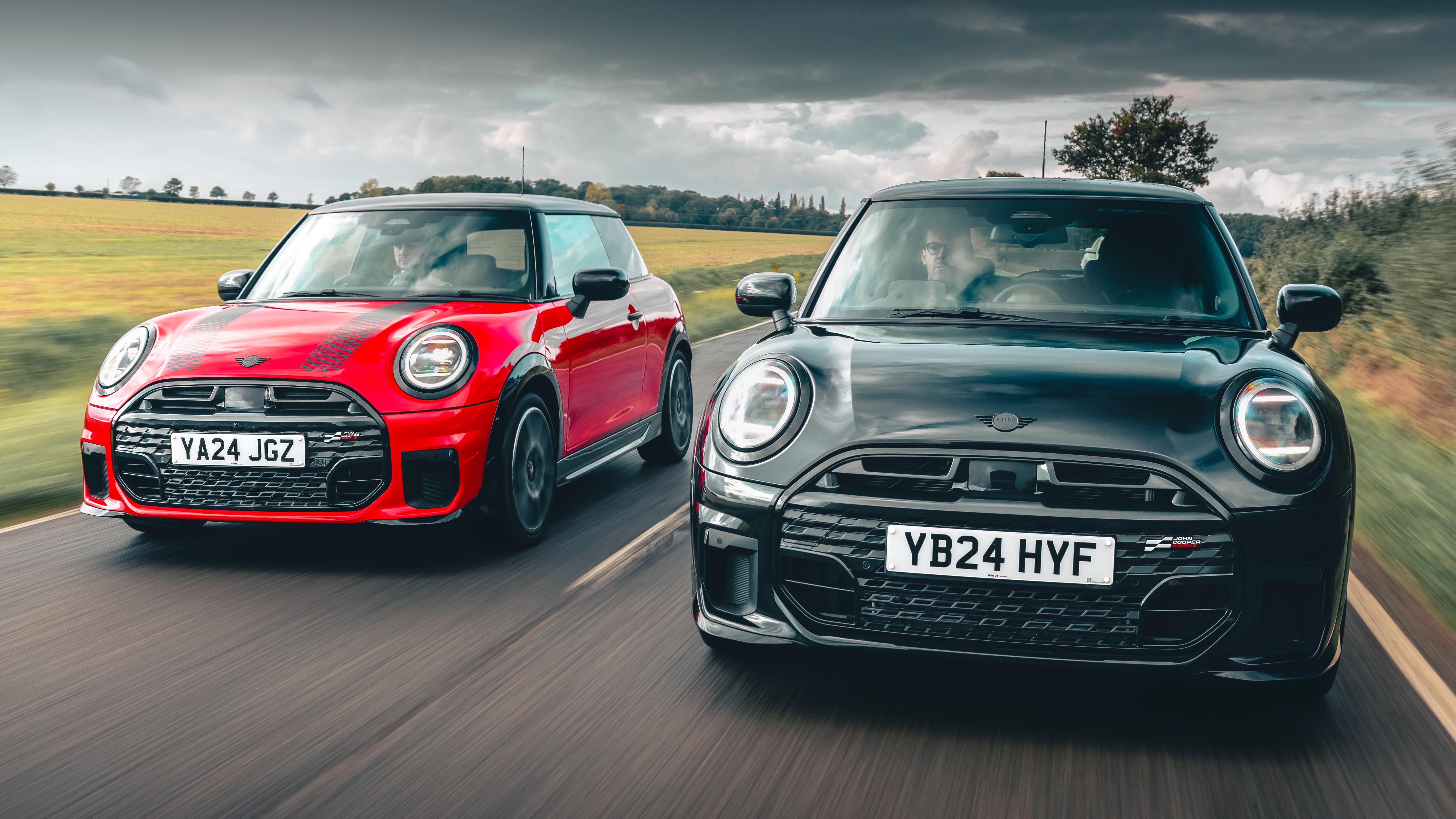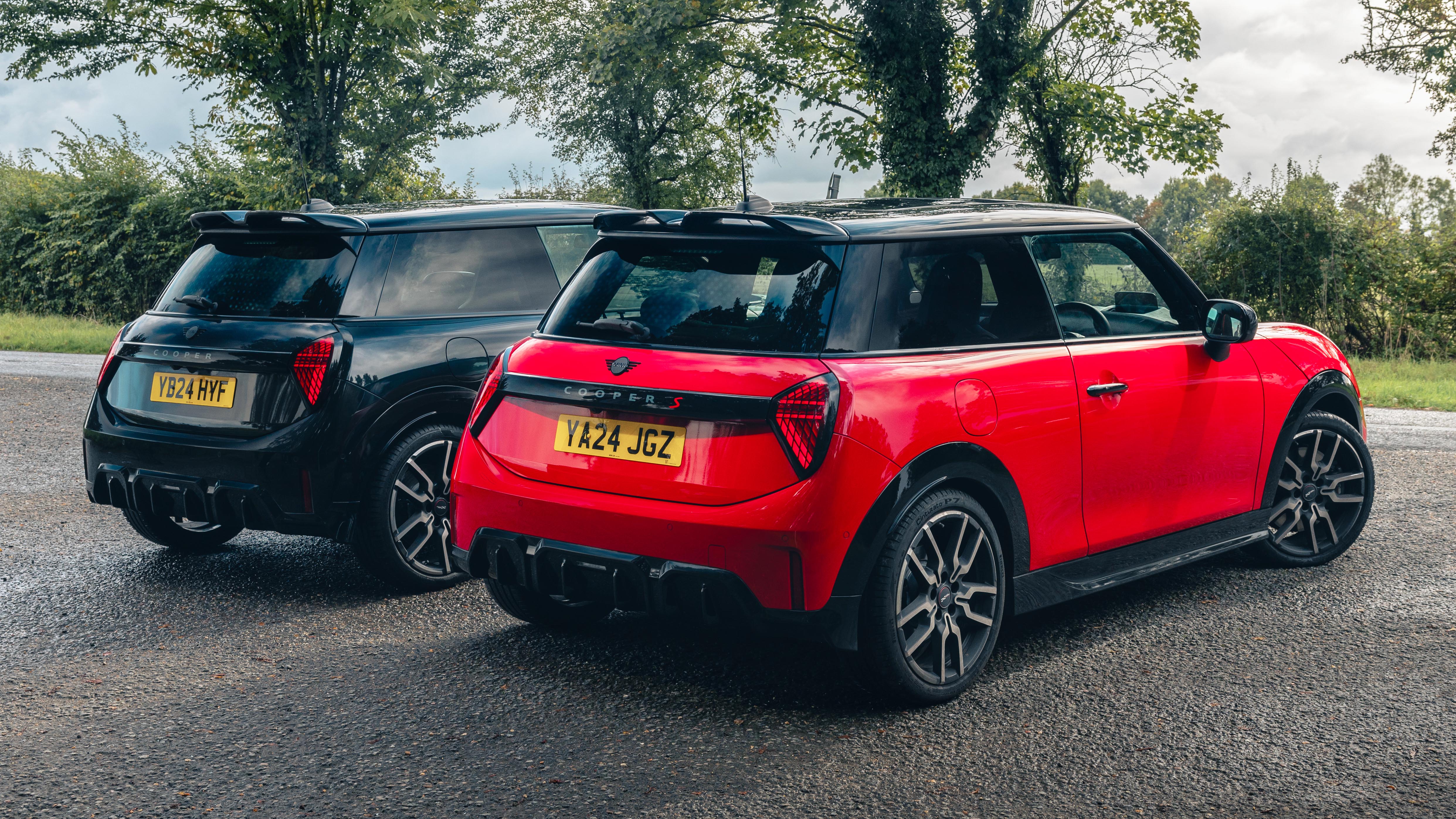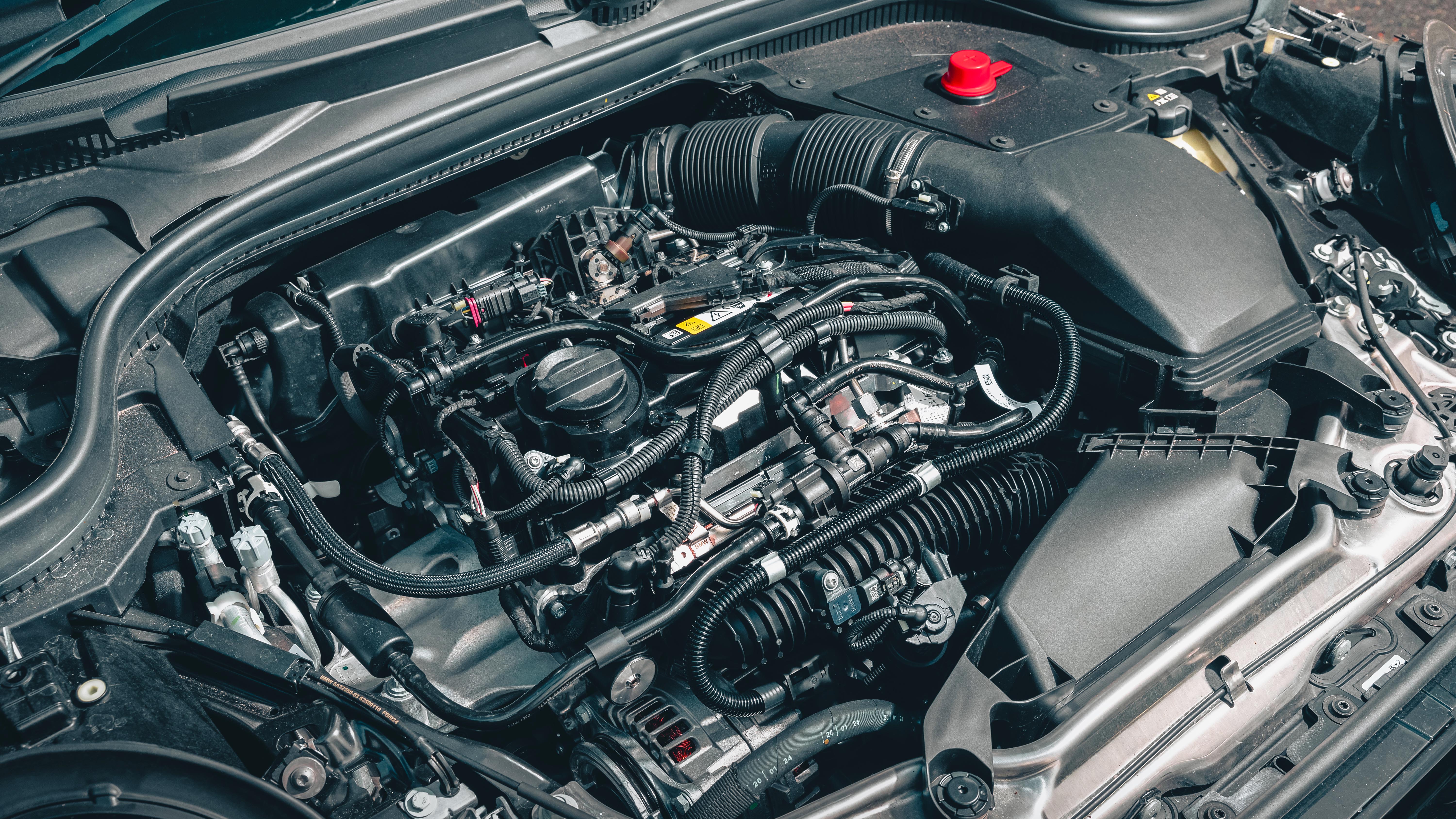
SPEC HIGHLIGHTS
- SPEC
Mini Cooper S
- ENGINE
1998cc
- BHP
201.2bhp
- 0-62
6.8s
Cooper S vs Cooper C: did we pick the wrong Mini to run?
There are many choices with the new Cooper. There’s the looks-identical-but-actually-different electric one. Would’ve been interesting… but not quite enough range for the round trips I do most regularly.
There’s also the Cooper C – the entry-level version. This, I suspected, is actually the best of the current Minis. Not an outlandish prediction: our pick of the previous generation was the 1.5-litre 3cyl turbo Cooper, and that’s basically returned with a ‘C’ badge. For some reason.
I’d hoped the Cooper C would arrive not wearing JCW garb, because to my eyes the standard Cooper bodywork is actually cleaner, cooler and prettier, and also looks ‘newer’. You can see where Mini chamfered the edges and crisped up the lines versus the blobby old car. But nope, as you can see, it was another ‘Sport’ trim, with exactly the same gratuitous diffuser and overwrought front grille as TG’s Cooper S. Handsome wheels, though.
Because no Mini has a visible exhaust pipe any more, there’s actually no longer a visual tell around the back whether you’re looking at a Cooper S or a C. Well, apart from the badges, obviously. Which aren’t even badges, but simply a print on the rear hatch trim.
As the photos prove, it was a miserable day when S met C. I nobly decided to shelter in the black car, and after spending a few minutes utterly failing to find any interior differences between the cars either, I went for a test drive. And thoroughly enjoyed it.
The C feels dramatically different to the S. It starts with a more eager triple-cylinder thrum than the 2.0-litre car’s more onerous drone, and sounds far keener and less digitally augmented. I liked it – characterful and willing, just like a lil’ underdog three-cylinder should be.
It’s also noticeably lighter over the front end. Mini’s official figures don’t appear to suggest there’s much in it: the claimed kerbweight for the Cooper S is 1,360kg. The Cooper C, with the same automatic gearbox remember, is 1,330kg. But even so, shaving 30kg off the nose of a small car is a very tidy saving and you feel that reduced inertia fizzing through the C. Useful consumer advice alert: in its B-road natural habitat, the C generates a lot less tyre squeal than a fervently-driven S. It feels more composed, and yet more fun.
What else does the C do better? Puts its power down. No torque-steer causing the grotesquely thick wheel to try to waggle out of your hands. And there’s really not much between them on the road. Mini claims the S is 1.1 seconds quicker from 0-62mph (7.7sec plays 6.6) thanks to an advantage of nearly 50bhp and developing more torque (221b ft vs 170lb ft) for a slightly longer rev-band. Sounds like a lot.
But because the Cooper C doesn’t waste any horses to wheelspin or exfoliating your palms with an over-excited steering wheel, it keeps up. It makes the Cooper S feel like it’s trying too hard.
Looking like a home run for the Cooper C, then. It makes a more pleasant noise, it’s palpably more fun to drive, and it’s not so much slower that it would make me late everywhere. As you can see, it looks exactly as punchy as the S, and then there’s the savings.
A Cooper C sports costs £26,650. And I’m afraid you’ll want the Sport because while the body kit is a bit much, like a chihuahua in a Superman costume, a Sport is the only way to have paddleshifters to override the occasionally daydreaming gearbox.
That’s £4,400 less than a Cooper S Sport. Game, set and match. I’d take the C all day long and twice on Sundays, then have a couple of holidays on the change left over. Damn. We did pick the wrong Mini.
Except for one small thing. While browsing the screen in the Cooper C, I happened across its lifetime fuel economy. Now, this is a demo car after all, which has been thrashed within an inch of its life since it left the Oxford factory. But it had barely topped 40mpg. The Cooper S, with its heftier torque plateau is averaging closer to 45mpg, despite fuelling a whole extra cylinder.
So, less is more, apart from that bit, where more is less. As you were.
Featured

Trending this week
- Car Review
BMW iX3






